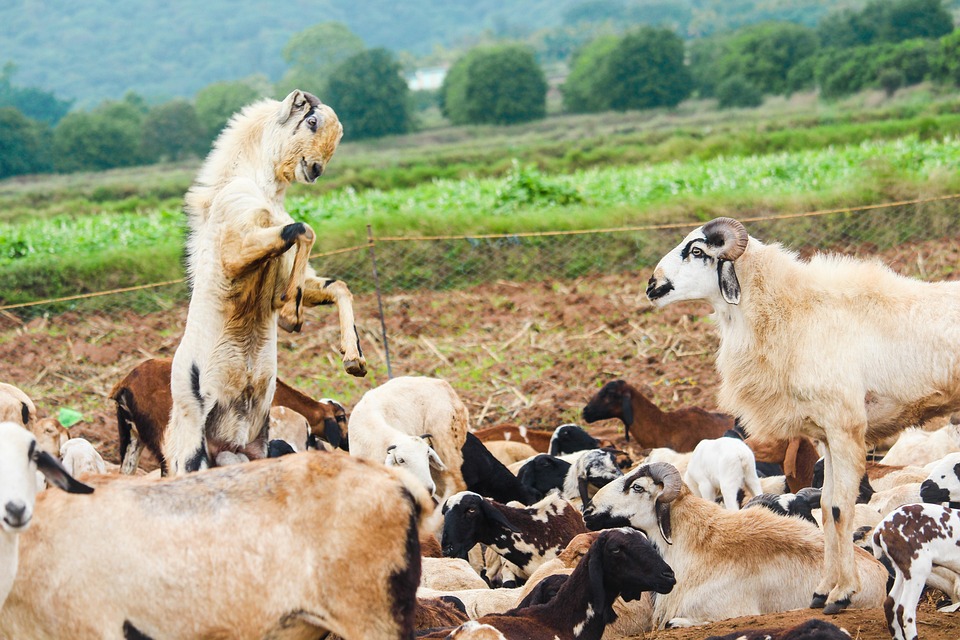## From Farm to Table: The Journey of Sustainable Food Production
Imagine waking up to the sound of chirping birds and soft rustling leaves, the fresh morning air rich with the earthy scent of damp soil and dew-kissed plants. Every bite of food you consume comes from the hard work of your hands, cultivated right in your backyard. This is the essence of sustainable food production—a philosophy that connects people to their food sources in meaningful ways while preserving the planet for future generations.
Sustainable farming isn’t just a trend; it’s a commitment to nourishing both people and the Earth. By emphasizing organic practices, biodiversity, and local ecosystems, sustainable farming nurtures a deeper relationship with food while reducing the carbon footprint associated with food production and transportation. It’s an exhilarating journey that begins right from the soil to your plate!
### Understanding the Concept of Sustainable Agriculture
Sustainable agriculture is more than a buzzword; it’s a harmonious blending of tradition and innovation. It’s a system that aims to meet our current food needs without compromising future generations’ ability to do the same. This farming method focuses on three main pillars:
1. **Environmental Health**
2. **Economic Profitability**
3. **Social and Economic Equity**
Through these principles, sustainable farming promotes practices such as organic farming, crop rotation, agroforestry, and permaculture, ensuring that the environmental impact is minimized while food production remains productive and profitable.
### The Journey of Food Production: From Seed to Plate
1. **Choosing Your Seeds Wisely**
The journey begins with selecting the right seeds. Heirloom and native seeds not only provide unique flavors but also require less intensive care. They often adapt better to local climates and conditions, reducing the need for chemical inputs.
2. **Preparing the Soil**
Healthy soil is the backbone of sustainable farming. Utilizing compost, green manures, and natural mulches enriches the soil, fostering a diverse ecosystem of microbes essential for plant health. Remember, soil isn’t just dirt; it’s an entire world teeming with life!
3. **Planting Techniques**
Companion planting is a fantastic technique for enhancing crop yield and health. By planting mutually beneficial plants together (e.g., tomatoes with basil), you can deter pests naturally, foster growth, and enhance flavor. Each growing season presents an opportunity to experiment with different combinations and see what flourishes best.
4. **Water Management**
Sustainable irrigation practices, such as drip irrigation, harness water efficiently while minimizing waste. Rainwater harvesting systems can also supplement your water supply, making it easier to keep your garden lush and green without straining this precious resource.
5. **Pest Management**
Chemical pesticides may provide immediate relief from pests, but they come with a heavy cost to both the environment and human health. Embrace natural pest management strategies, like beneficial insects (e.g., ladybugs), neem oil, or homemade insecticidal soaps.
6. **Harvesting with Care**
When it comes time to harvest, patience is key. Picking fruits and vegetables at their peak ripeness ensures maximum flavor and nutrients. Challenge yourself to try new ways to enjoy your bounty, whether it’s through raw enjoyment in salads or exploring canning or preserving methods.
7. **Transporting Your Food**
After harvesting, you may want to sell or share your produce. Shortening the food supply chain minimizes harm to the environment. Farmers’ markets, local restaurants, and community-supported agriculture (CSA) programs provide excellent avenues for fresh, local food distribution.
### The Connection with Community
Community plays a vital role in the journey from farm to table. Participating in local farming initiatives, teaching gardening workshops, or inviting neighbors to join in your sustainable practices fosters a sense of belonging and shared responsibility. Not only does this strengthen local ties, but it also promotes a robust local food system.
### The Importance of Seasonal Eating
Part of sustainable food production is being conscious of the seasons. Eating seasonally not only enhances the flavor of food but also supports local farmers and reduces the energy spent on transporting food. Your meals will naturally cycle through the fresh produce that each season uniquely offers—think crisp apples and hearty squash in autumn, vibrant greens in spring, and juicy tomatoes in summer.
### Exploring Sustainable Food Production Methods
Exploring various sustainable farming methods can breathe new life into your garden and food production endeavors. Some popular methods include:
– **Permaculture**: A design system that mimics natural ecosystems to create self-sustaining habitats that yield food while enhancing biodiversity.
– **Aquaponics**: Combining aquaculture with hydroponics, this system allows fish waste to nourish plants, which, in turn, filter and clean the water for the fish. It’s a sustainable, water-efficient food production method that offers a bounty of both protein and vegetables.
– **Vertical Farming**: Perfect for urban areas, vertical farming utilizes stacked layers to grow crops, reducing land use while ensuring efficient planting and harvesting.
### Pro Tips for Sustainable Food Production
1. **Start Small**: Whether you’re beginning a garden or experimenting with sustainable practices, start small. Embrace the learning curve, and gradually expand your efforts as you gain experience.
2. **Educate and Involve Others**: Teach children and neighbors about gardening and sustainability. Engaging others creates a community that values and understands the importance of sustainable practices.
3. **Keep Records**: Maintain a gardening journal. Document what works and what doesn’t; track planting dates, pest management, and harvest results. This information is priceless for future seasons!
4. **Utilize Technology**: Explore apps and tools dedicated to gardening and farming. From tracking growth cycles to pest identification, technology can provide invaluable assistance in your sustainable farming journey.
5. **Share Your Harvest**: Connect with your community by sharing surplus produce with neighbors or donating to local food banks. This not only helps reduce waste but also strengthens community ties.
### The Future of Sustainable Food Production
With the growing awareness of climate change, food scarcity, and environmental sustainability, the future of our food system increasingly hinges upon sustainable practices. By choosing to promote sustainable food production, individuals can actively contribute to a more resilient and equitable food system.
Sustainable farming can foster environmental stewardship, support local economies, and provide fresh, nutritious food to communities. As more people embark on the journey from farm to table, we can collectively cultivate a brighter future, one seed at a time.
### Conclusion
Embracing sustainable food production isn’t merely about growing food; it’s a lifestyle that nourishes body, mind, and planet. From seeds to harvest, every step taken in this journey brings us closer to understanding the intricate connections we share with our food and the Earth. So grab a shovel, plant some seeds, and enjoy the exciting adventure that awaits on your sustainable food journey!
By integrating your skills, community, and local ecosystems, you can partake in a meaningful dialogue on sustainability and nourish your body with food that honors both the Earth and your relationship to it. As you embark on this vibrant journey, remember that every meal can tell a story—and this one begins on your very own plate.



